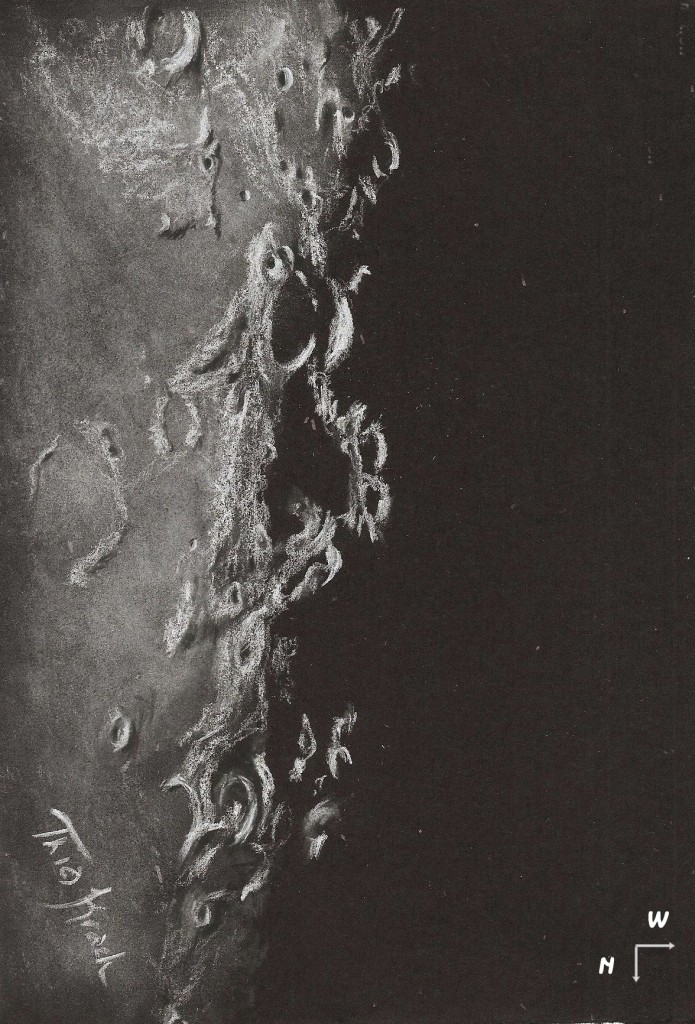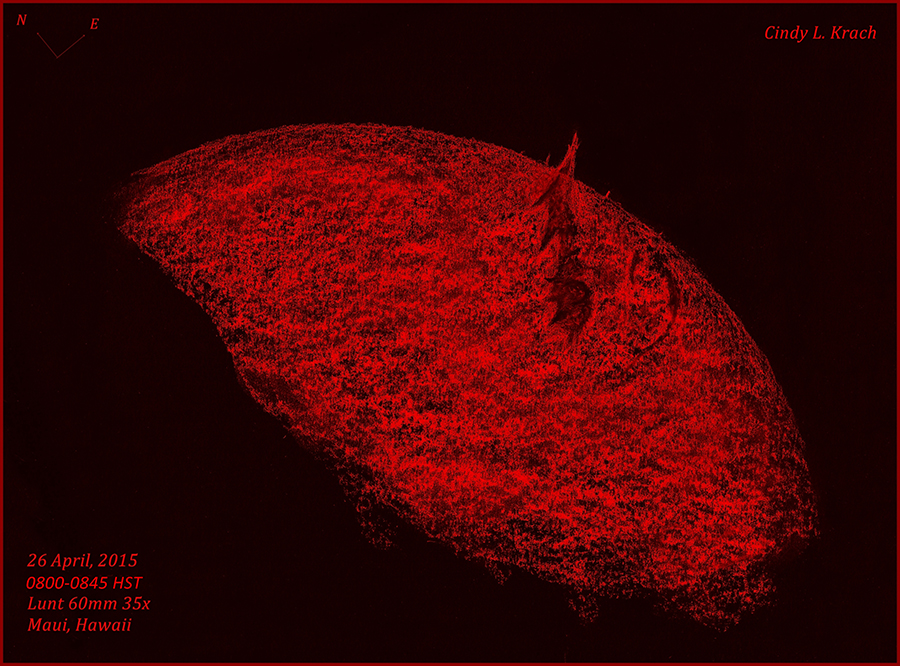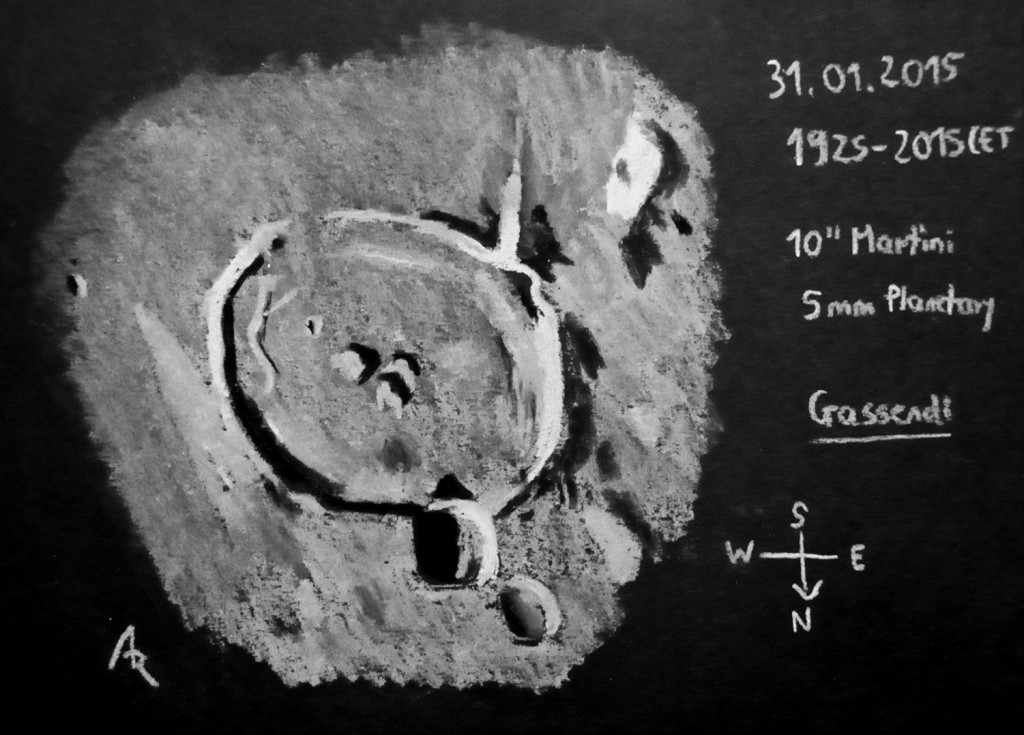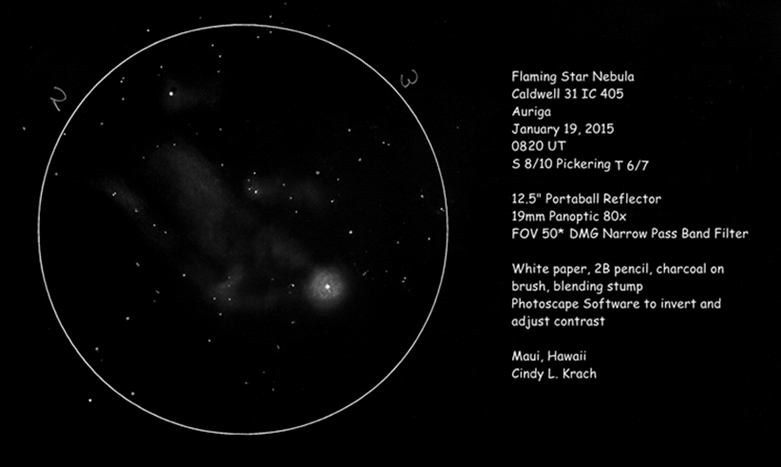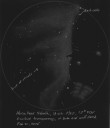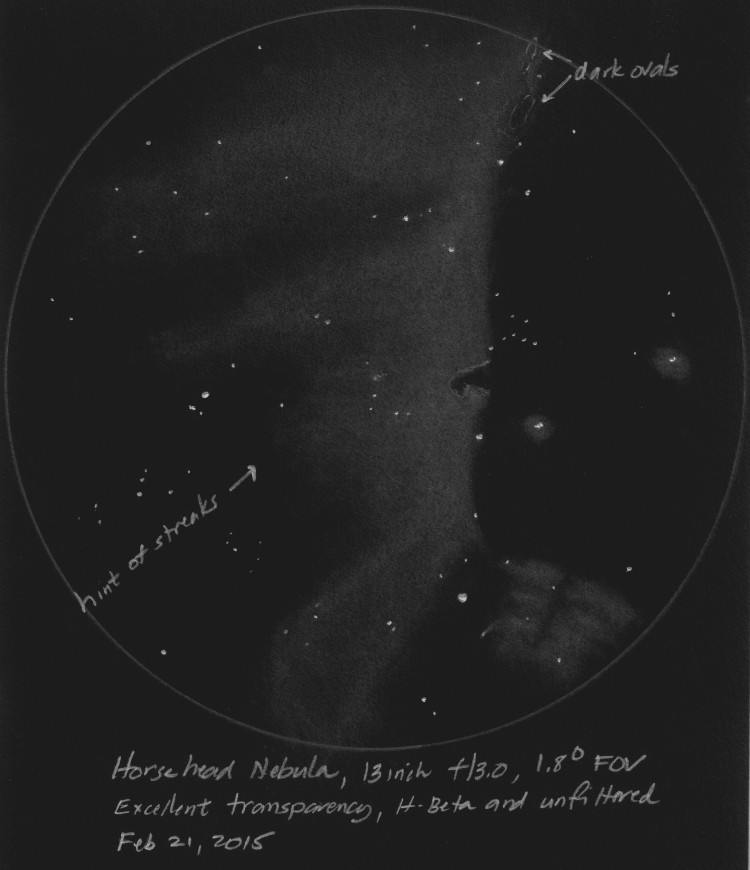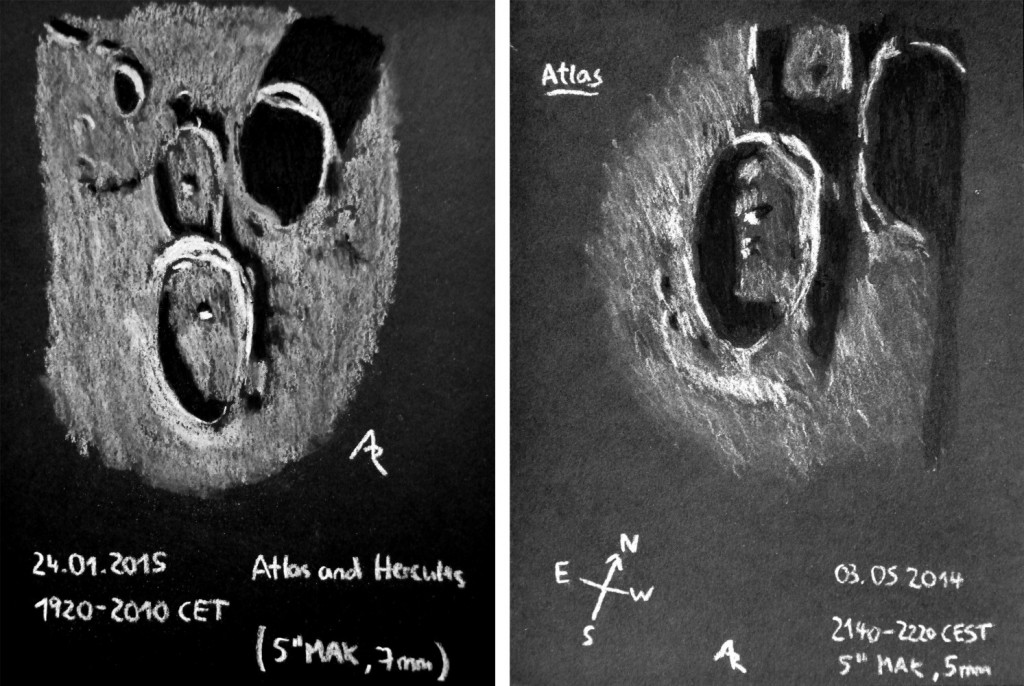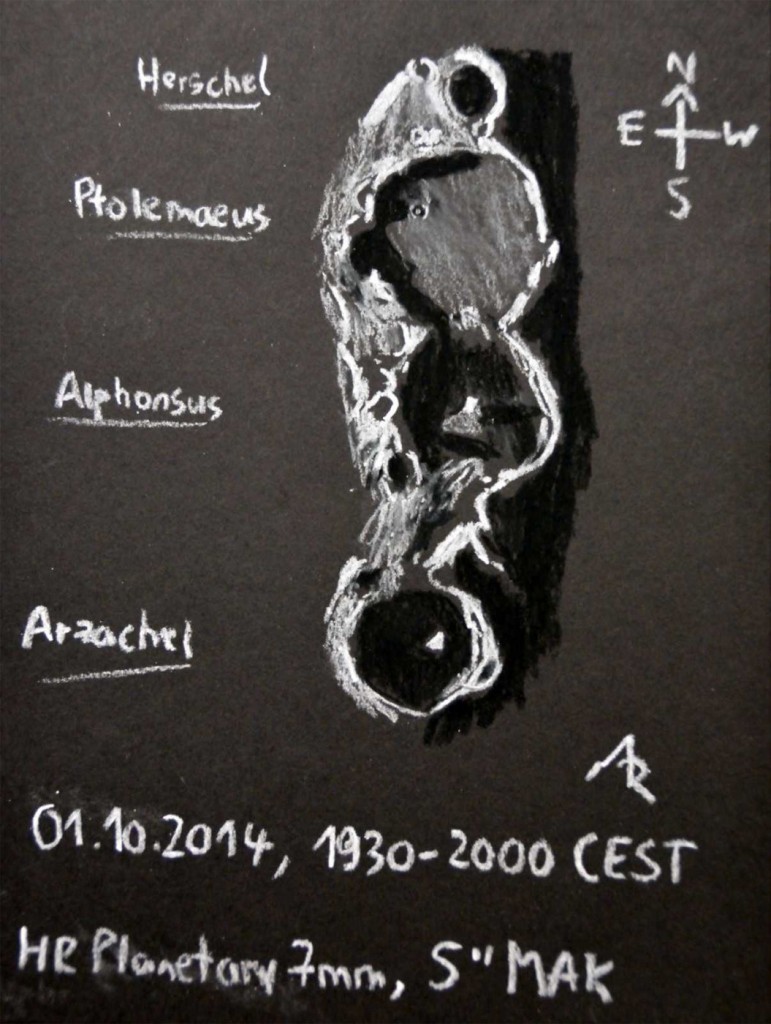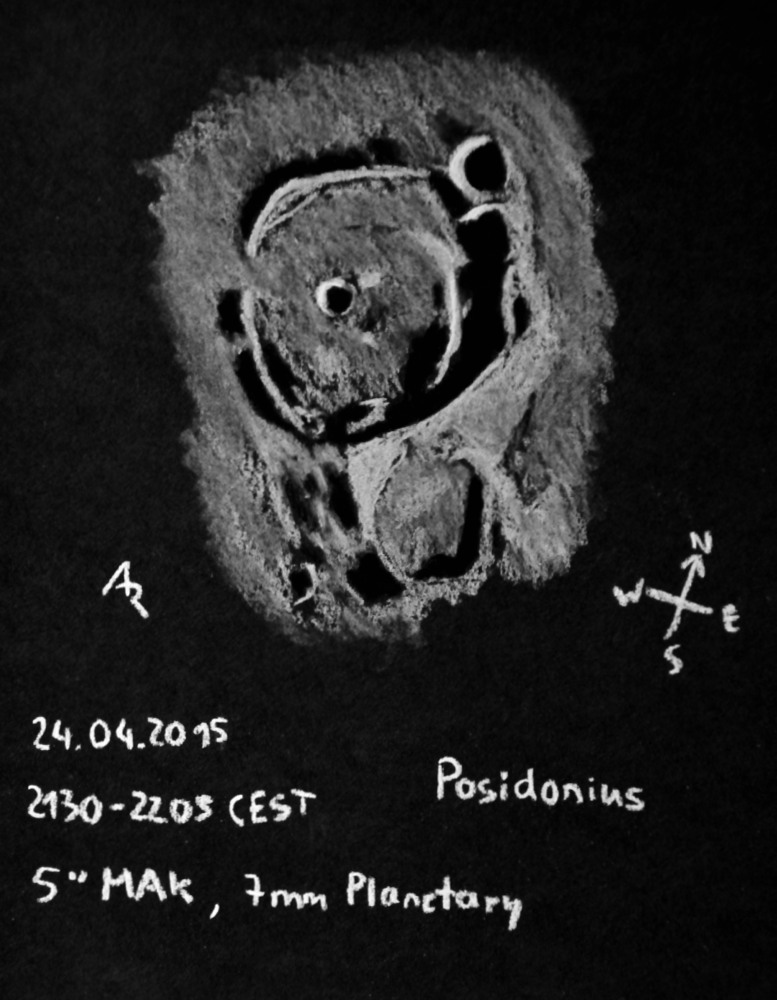
Hi all,
Friday evening just before the altocumulus clouds of the approaching depression covered the sky, I could do another sketch of the moon: This time it was crater Posidonius and its surroundings.
Ah, by the way, this time I tried a new pen: For the bright areas (e. g. the western rims of Posidonius A and J), I took a whitecoal pen instead of chalk pen. That provided much brighter contrast.
Another novelty for me: I didn’t use a diagonal but an Amici prism, so that the view in the eyepiece wasn’t mirrored at all. The view was a bit less bright, but for the moon it’s still bright enough.
Object Name: Posidonius
Object Type: Lunar Crater
Location: Germany, Dusseldorf area
Date: 2015-04-24, 2130-2205 CEST
Media: chalk pastel pencil, whitecoal pencil and charcoal pencil on black sketching cardbox
Telescope: Celestron Nexstar 127 SLT
Eyepiece: TS HR Planetary 7mm
Clear skies
Achim


